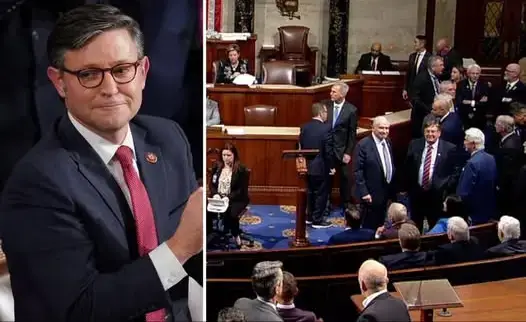On Friday, the U.S. House of Representatives approved the “Protecting American Energy Production Act,” landmark legislation designed to safeguard hydraulic fracturing—commonly known as fracking—from executive‐branch restrictions. By a vote of 226 to 188, the chamber granted Congress exclusive authority to enact any moratorium or ban on fracking, effectively preventing a future president from imposing unilateral prohibitions without legislative approval. The bill’s passage has reignited a fierce national debate over the trajectory of U.S. energy policy, pitting advocates of domestic fossil fuel production against proponents of a swift transition to renewable sources.
In this article, we provide an in‐depth examination of the bill’s key provisions, the arguments marshaled by its supporters and detractors, the broader context of the Biden administration’s energy agenda, and the legislation’s prospects in the Senate. Along the way, we consider how this measure reflects the fundamental tension at the heart of American energy policy: balancing economic growth and national security against environmental stewardship and climate imperatives.
I. Key Provisions of the “Protecting American Energy Production Act”
1. Congressional Prerogative over Fracking Moratoria
-
No Presidential Moratorium Without Vote
The bill stipulates that any presidential action to suspend, limit, or ban fracking on federal lands or waters must first secure congressional approval. Executive orders or administrative rules imposing such restrictions would be rendered invalid unless ratified by a majority vote in both the House and Senate. -
Scope and Definitions
“Fracking” is defined in the legislation as the practice of injecting high‐pressure fluids into subterranean rock formations to extract oil or natural gas. The bill applies to federal lands, Outer Continental Shelf territories, and any regulatory framework under the Department of the Interior or the Environmental Protection Agency governing the practice.
2. Streamlined Permit Reviews
-
The act directs federal agencies to expedite permitting decisions for drilling and fracking operations, mandating a final determination within 90 days of a complete application submission. Withdrawing or delaying permit decisions on grounds of a fracking moratorium is expressly prohibited.
3. Legal and Enforcement Mechanisms
-
Judicial Review
Any attempt by the executive branch to enforce a fracking ban absent congressional sanction would be subject to immediate judicial challenge, empowering industry stakeholders to request injunctive relief. -
Cost Recovery
If a court invalidates a unilateral executive action, the government may be liable for legal costs incurred by private parties who successfully secured relief.
II. Origins and Sponsorship
Representative August Pfluger (R-TX) spearheaded the bill’s introduction on behalf of the House Energy and Commerce Committee. Representing a district at the heart of the Permian Basin—one of America’s most prolific oil and gas regions—Rep. Pfluger framed the legislation as essential to securing energy independence and preserving jobs in his constituency. In his remarks on the House floor, he emphasized, “Domestic producers need certainty. We cannot allow executive whims to jeopardize the technologies that have powered our economy for generations.”
Co‐sponsors included Representatives Bruce Westerman (R-AR), Cathy McMorris Rodgers (R-WA), and a bipartisan contingent of lawmakers representing energy‐producing states. Their collective aim was to enshrine fracking as a cornerstone of U.S. energy strategy, immune to future executive‐branch shifts.
III. Fracking’s Role in U.S. Energy Production
1. Industry Growth and Economic Impact
-
Production Boom
Since the early 2000s, fracking has revolutionized the American energy sector. Technological advancements have unlocked vast shale reserves in Texas, North Dakota, Pennsylvania, and beyond, propelling the United States to become the world’s leading producer of oil and natural gas. -
Job Creation
According to the U.S. Chamber of Commerce, the direct, indirect, and induced employment supported by fracking and associated industries exceeds 2.5 million jobs, encompassing drilling operations, pipeline construction, equipment manufacturing, and service providers. -
Fiscal Revenues
State and local governments depend heavily on royalties, taxes, and lease payments associated with oil and gas extraction. In Texas alone, energy‐related revenues contribute over 30% of the state’s general fund, financing schools, infrastructure, and public safety.
2. Environmental and Public Health Concerns
-
Water Contamination Risks
Environmental groups contend that fracking fluids—comprising water, sand, and chemical additives—can migrate into aquifers when well casings fail or waste fluids are improperly managed. The Environmental Protection Agency (EPA) and independent researchers have documented instances of elevated methane and chemical concentrations in nearby groundwater. -
Seismic Activity
Scientific studies link the injection of wastewater byproducts from fracking into deep disposal wells with an uptick in low‐magnitude earthquakes, particularly in regions such as Oklahoma and southern Kansas. -
Air Quality and Greenhouse Gases
Methane emissions from wellheads, pipelines, and compressor stations contribute to both local air pollution and global warming—methane is approximately 84 times more potent than carbon dioxide over a 20‐year horizon.
These concerns have galvanized environmental and public health advocates, who argue that fracking’s benefits must be weighed against long‐term ecological and community impacts.
IV. Supporters’ Arguments: Energy Security and Economic Vitality
1. Energy Independence
-
Proponents argue that maintaining robust fracking operations is critical to reducing America’s reliance on foreign oil imports. Prior to the shale revolution, the United States imported roughly 40% of its petroleum needs; today, net imports have declined to under 5%. This shift, supporters contend, enhances national security by insulating the economy from geopolitical supply disruptions.
2. Job Preservation and Economic Stability
-
In energy‐producing regions, the industry sustains high‐wage employment and stimulates secondary economic activity. Supporters maintain that abrupt executive‐branch intervention could lead to layoffs, bankruptcies, and a ripple effect across supply chains.
3. Market Certainty
-
The bipartisan uncertainty generated by fluctuating executive orders—ranging from expanded drilling to imposed moratoria—discourages long‐term capital investment. By codifying fracking protections, the bill seeks to restore investor confidence, ensuring a predictable regulatory environment.
4. Incremental Environmental Gains
-
Industry groups highlight that technological improvements—such as reduced‐emission completions (“green completions”) and enhanced leak detection—have significantly mitigated fracking’s environmental footprint. They argue that further efficiency gains can be achieved through innovation rather than outright bans.
V. Opponents’ Critique: Environmental Risk and Energy Transition
1. Climate Change Imperatives
-
Critics assert that enshrining fracking protections in federal law undermines the United States’ ability to meet its climate commitments under the Paris Agreement. They warn that continued reliance on fossil fuels hampers efforts to reduce carbon emissions and transition to renewable energy.
2. Public Health and Safety
-
Environmental advocacy organizations, including the Sierra Club and Earthjustice, emphasize documented cases of water contamination and respiratory illnesses in communities proximate to drilling sites. They argue that congressional approval thresholds should not override rigorous environmental reviews.
3. Technological Disparities
-
Opponents contend that renewable energy technologies—solar, wind, geothermal, and battery storage—have advanced to the point of economic competitiveness without direct subsidies. They advocate for redirecting public and private investment away from fossil fuel infrastructure toward clean alternatives.
4. State and Local Authority
-
Several Democratic governors and state legislators argue that energy policy should be determined at the state level, reflecting local priorities and environmental standards. They challenge the federal government’s attempt to preemptively bar future moratoria, potentially constraining state efforts to regulate or halt fracking within their borders.
VI. Political Context: The Biden Administration’s Energy Agenda
1. Executive Actions on Fossil Fuel Development
-
In the final months of his term, President Joe Biden enacted a temporary ban on new oil and gas leases on federal lands and waters—citing the twin goals of mitigating climate change and preserving natural landscapes. This executive order represented one of the administration’s flagship climate initiatives, aimed at shifting public lands management away from fossil fuel extraction.
2. Competing Priorities
-
The administration has simultaneously invested in renewable energy infrastructure through the Infrastructure and Jobs Act and the Inflation Reduction Act, providing billions in incentives for clean energy deployment, electric vehicle adoption, and grid modernization.
3. Ongoing Policy Review
-
Secretary of the Interior Deb Haaland announced an internal review of existing regulations and permitting processes, with an eye toward both environmental safeguards and regulatory streamlining. This review seeks to identify barriers—real or perceived—that impede energy project timelines, from environmental impact assessments to tribal consultations.
4. Congressional Pushback
-
The “Protecting American Energy Production Act” embodies congressional Republicans’ broader strategy to curb executive authority and shift energy policymaking power back to Capitol Hill. By insisting on legislative approval for future fracking moratoria, they aim to neutralize ongoing and prospective executive‐branch initiatives.
VII. Legislative Outlook in the Senate
1. Senate Composition and Partisan Dynamics
-
With a narrow majority or potential 50–50 split requiring Vice Presidential tie‐breaking votes, the Senate presents a more challenging terrain for the bill. While a handful of moderate Democrats representing energy states—such as West Virginia’s Joe Manchin or Montana’s Jon Tester—could potentially support the measure, staunchly liberal senators are expected to oppose it.
2. Filibuster Considerations
-
Unless supporters secure 60 affirmative votes, the bill may fall victim to a filibuster—a procedural hurdle that demands bipartisan consensus or targeted amendments to attract centrist backing.
3. Amendment Process
-
Senate Democrats and environmental advocates are likely to propose amendments to introduce stricter environmental safeguards, judicial review timelines, or carve‐outs for state‐level decision‐making. Republicans may resist such changes, arguing that they undermine the bill’s purpose.
4. Prospects for Compromise
-
A potential path forward may involve negotiating a narrower scope—limiting the fracking prohibition requirement to select federal lands or specifying a fixed duration for the congressional approval mandate. Such a compromise could attract marginal support, though at the risk of diluting the bill’s primary objectives.
VIII. Broader Implications for U.S. Energy Policy
1. The Fork in the Road: Fossil Fuels vs. Renewables
-
The bill’s passage in the House crystallizes the central dilemma facing U.S. energy policymakers: whether to double down on domestic oil and gas production as a stop‐gap for energy security or to accelerate the pivot toward decarbonized resources.
-
Pro‐fossil fuel stakeholders stress that even with aggressive renewable build‐out, natural gas remains essential for grid reliability and as a bridge fuel. Conversely, climate advocates argue that any extension of fossil fuel infrastructure delays the transition and locks in decades of carbon emissions.
2. International Signal
-
By restricting executive authority over fracking, the United States sends a message to global markets and allies that it will not unilaterally retreat from hydrocarbon development—even as other nations commit to ambitious net‐zero targets. This stance could affect international climate negotiations and market expectations around energy supply.
3. Technological Innovation
-
Regardless of the bill’s ultimate fate, the debate underscores the need for continued investment in low‐emission drilling technologies, next‐generation geothermal systems, and carbon capture and storage (CCS) solutions. These innovations may reconcile the competing demands for energy security and environmental protection.
IX. Conclusion
The House’s approval of the “Protecting American Energy Production Act” marks a pivotal moment in the United States’ ongoing struggle to define its energy future. By demanding congressional approval for any presidential moratorium on fracking, the legislation recalibrates the balance of power between the executive and legislative branches on matters of national energy policy.
Supporters have framed the measure as indispensable for preserving American energy independence, safeguarding jobs, and providing regulatory certainty. Opponents have decried it as a barrier to environmental protection, climate progress, and local autonomy. As the bill moves to the Senate, its prospects will hinge on complex negotiations, filibuster thresholds, and the willingness of moderate lawmakers to bridge partisan divides.
Ultimately, this legislation underscores a broader question facing the nation: Can the United States simultaneously maintain leadership in fossil fuel production and forge a credible path toward a clean, sustainable energy economy? The answer to that question—and the balance struck between economic, environmental, and security imperatives—will shape American policy and global climate outcomes for decades to come.

Adrian Hawthorne is a celebrated author and dedicated archivist who finds inspiration in the hidden stories of the past. Educated at Oxford, he now works at the National Archives, where preserving history fuels his evocative writing. Balancing archival precision with creative storytelling, Adrian founded the Hawthorne Institute of Literary Arts to mentor emerging writers and honor the timeless art of narrative.
